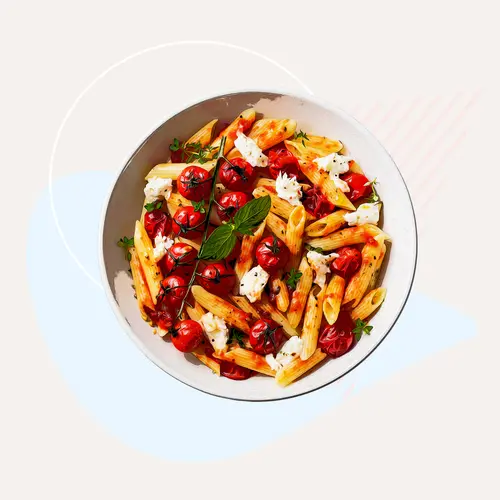What Is Jicama?
Jicama is a root vegetable with thick, brown skin and white flesh. It tastes like an apple but not as sweet. It’s a bit like a potato but with a lot fewer carbs. The jicama plant grows mostly in Mexico and Central America on a long vine. But the part you eat is the root.
On the outside, jicama looks like a light brown beet. Inside, it looks and feels like a raw potato, but doesn't taste like one. It's crisp and slightly sweet, like an apple. But jicama doesn't brown like an apple after you cut it.
These can grow up to 50 pounds! But don't worry about carrying one into your car at the farmer's market. The small ones are the best to eat. Jicama (pronounced HEE-kuh-muh or HIH-kuh-muh) goes by many other names, including:
- Chinese potato
- Mexican potato
- Mexican yam
- Mexican yam bean
- Mexican water chestnut
- Mexican turnip
- Leafcup
Where to buy jicama
You can find jicama in your grocery store near the other root vegetables.
Jicama Nutrition
One medium-sized jicama has:
- 250 calories
- 58 grams of carbs
- 32 grams of fiber
- 12 grams of sugar
- 4 grams of protein
- 15%-19% of your daily recommended vitamin C
Jicama Benefits
Tater (potato) twin. People often compare jicama to potatoes because of their similar flesh. But jicama is much healthier and has far fewer carbohydrates.
A fun way to get fiber. Instead of an apple, peel and slice a jicama and dip it in a nut butter. It's a fiber-packed snack that prevents constipation, lowers cholesterol, and cuts your risk of getting colon cancer and heart disease.
Aids digestion. Research shows inulin, a prebiotic fiber found in jicama, supports healthy digestion.
Vitamin C. This vitamin gives a big boost to the immune system -- your body's defense against germs. It's also good for your eyes and skin. And it lessens inflammation in your body that can cause arthritis and other diseases.
Vitamin B6. Jicama has this key vitamin, which supports your brain and nerves, forms red blood cells, and turns protein into energy.
Supports oral care. The vitamin C in jicama helps keep your teeth and gums healthy.
Antioxidants. Jicama has several of these compounds that help prevent cell damage. Getting enough antioxidants from food has been linked to a lower risk of cancer, diabetes, heart disease, and cognitive decline.
Boosts heart health. Jicama has dietary fiber, which may lower cholesterol levels.
Prebiotic. Jicama is rich in a type of prebiotic fiber that helps restore the good bacteria in your gut.
Helps with hydration. Jicama is 85% water. It can help you stay hydrated, especially when it's hot outside.
Safe for blood sugar. If you're watching your blood sugar and insulin, jicama is a safe snack. It has carbs with a low glycemic load, which means the carbs don't affect your blood sugar very much.
Jicama Risks
How to Prepare Jicama
- Choose a jicama that's small, heavy, and firm and has smooth skin.
- Wash it well and cut off any roots.
- Use a paring knife or vegetable peeler to remove the skin completely, including the paper-like layer underneath.
- After you peel it, cut it in half to make it easier to manage. Then cut it into cubes, sticks, or slices, or you can shred it.
How to Eat Jicama
Most people eat jicama raw with salt, lemon or lime juice, and chili powder sprinkled on top. You can also:
- Pickle it.
- Make a slaw (a kind of salad) out of it.
- Use it to add crunch and extra vitamins to salads.
- Serve it like cucumber on vegetable platters or with sushi.
- Add it to stews, soups, or stir-fries.
- Cook and mash it like a potato.
- Cut it into long strips, toss it with oil, and fry.
- Sauté it with other vegetables.
- Eat it with a dip.
- Swap it for water chestnut in a stir-fry.
Jicama salad
Ingredients:
- 1 pound medium peeled cooked shrimp
- 1 large jicama, peeled and finely diced
- 1 can of black beans, drained and rinsed
- 1 large grapefruit, peeled and sliced (save grapefruit juice)
- 1 avocado, pitted and diced
- 1/2 cup chopped fresh cilantro
- 3 tablespoons minced red onion
- 1 lime, juiced
- 1/4 cup extra-virgin olive oil
- 2 teaspoons honey
- 1 1/2 teaspoon ground cumin
- 1 teaspoon salt
- 1/4 teaspoon ground chipotle chili, or to taste
Steps:
- Gather jicama, shrimp, black beans, grapefruit pieces, and avocado on a plate and sprinkle with cilantro and onion.
- Mix grapefruit juice, lime, extra-virgin olive oil, honey, and chipotle in a covered container. Shake well to blend, and pour over salad right before serving.
Jicama fries
Steps:
- Peel a medium-sized jicama and cut it into matchstick-sized pieces.
- Squeeze lime juice on top of the jicama and toss it well to ensure even coating.
- Sprinkle the vegetables with chili powder and salt.
How to Store Jicama
Takeaways
Jicama is a root vegetable from Mexico and Central America, known for its thick brown skin and crisp, white flesh that tastes mildly sweet, kind of like an apple. It's low in carbs and calories, making it a healthy alternative to potatoes. Rich in fiber, vitamin C, and antioxidants, it offers numerous health benefits, such as aiding digestion, boosting the immune system, and supporting heart health.
You can prepare and eat it in lots of different ways, such as raw with seasonings, pickled, or cooked in dishes such as stews or stir-fries. When storing, keep unpeeled jicama in a cool, dry place for up to 3 weeks, while peeled jicama should be refrigerated and used within a week.

